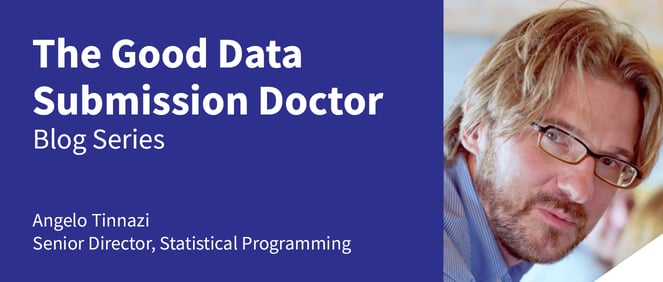The FDA “Real-Time Oncology Review” Process


The FDA “Real-Time Oncology Review (RTOR)”[1] is an “FDA project started in 2018 to facilitate earlier submission of topline results and datasets to support an earlier start to the FDA application review”. Initially piloted to support Supplemental New Drug Application (sNDA)[2] and New Biologic License Application (sBLA), it is now open to any eligible NDA and BLA; there are plans to extend the RTOR process to other Therapeutic Areas.
In a nutshell, with the RTOR, the sponsors have the opportunity to anticipate the FDA results from the pivotal study(ies) as soon as they are available (soon after database lock) and therefore, have an earlier engagement with the agency. The full submission package can be simultaneously prepared and later submitted, with the hope to “anticipate” market approval (“Although RTOR does not guarantee an action date prior to the PDUFA date, three out of the four cases described were approved months earlier than the PDUFA date”). As of April 2020, RTOR was used to support the submission and review drug approvals for 20 oncology applications[4,5] .
Over the past years, there have been some instances where sponsors (for example, Roche and Novartis[6], Seattle Genetics[7] and Janssen[8]) have shared their experience on the RTOR process. From the three presented experiences, below are the common “denominators”:
- Early engagement and clear communication with the FDA
- Quick response to Information Requests after the submission of the “Pre-submission Package”
- eSubmission readiness at Database lock i.e., do not wait till the end of the analysis
- Accelerated completion of CSR
- Reduced effort for final submission
- Resources planned ahead of time
What do you need to provide in the RTOR “Pre-submission Package”?
From the FDA RTOR page, among other required items e.g., top line efficacy/safety tables/figures, the following data submission items are expected:
- Complete SDTM dataset package - in addition to compliant CDISC SDTM datasets, it must include the define-xml, aCRF and Clinical Study Data Reviewer Guide
- Complete ADaM datasets package for key efficacy and safety tables/figures; define-xml and Analysis Data Reviewer Guide are also expected, together with SAS programs for the submitted ADaM datasets and tables/figures
The FDA page also contains a link to a PDF document, The Pilot OCE/OOD Safety Team Standard Data Requests, where the FDA provides the recommended structure of the ADaM datasets to be submitted[9] (in the document, they also specify a define.pdf that is expected!).
The table below lists the ADaM datasets for which details are provided in the document (Variable Name, Label, Type, Codelist, CDISC core, RTOR core, Source Additional Information); the document also contains some additional requirements for ts.xpt dataset e.g., list of trial parameters they expect to see in the dataset.
| Dataset | Purpose and FDA specific requirements |
| ADSL Subject level Analysis Dataset |
Key subject level information Specific FDA variables such as: - TRTEDY (Study Day of Last Exposure to Treatment) - DTH30TFL (Death Within 30 Days of Last Treatment) - DTA30TFL (Death After 30 Days of Last Treatment) - DTB30TFL (Death Within 30 Days of First Treatment) - NCTXSDT (Start Date of New Anti-Cancer Therapy) - CUTDT (Data Cut-off Date), this is redundant with the information in ts.xpt |
| ADAE Adverse Events Analysis Dataset |
Specific FDA variables such as, variables related to individual ‘experimental’ drugs when using regimens made of combined treatments or the variable GRPID used, as per the specifications, “to tie together a block of records for a subject that belong to the same adverse event, e.g., grade 1 pyrexia which progresses to grade 2 should be identified with the same GRPID” |
| ADLB Laboratory Analysis Dataset |
Specific FDA variables sucha as, EVLLBFL (Evaluable Lab Flag) to flag subject having both baseline and at least one on-study value |
| ADEX Exposure Analysis Dataset |
Directly mapped from SDTM.EX - EXDURD (Duration of Treatment (days)) |
| ADEXSUM Exposure Summary Analysis Dataset |
BDS derived from ADEX containing summary information by subject and by subject/cycle (AEVLINT variable) Value metadata with details of all required parameters are also available, for example PARAMCD=RDOSINT (Relative Dose Intensity (%)) |
| ADCRSNT Adverse Events Analysis Dataset for Cytokine Release Syndrome (CRS) and Neurotoxicity (NT) |
Derived from ADAE with additional flags e.g., FDAGT (CRS vs NT) The required structure is unclear, and an example would have helped, for instance the expected structure is “One record per subject per adverse event per start date” but from the specs some variables contain some statistics by subject e.g., “NT max tox grade by subject-period” |
Overall, the provided specifications seem aligned with the most recent ADaM IG 1.2[10,11]. Given the fact the first version of these specifications was released on July 2019, with current version updated last February (from their revision history “Modified several variable names for CDISC compliance; added notes for some OOD-specific variables”), it is not known if the sponsors that have shared their experience so far have followed the suggested ADaM structure and how much FDA was flexible receiving something different.
To conclude, as per the title of this article, the RTOR presents an opportunity for sponsors to accelerate their product market approval although, it may increase the burden for both sponsor and the agency. The RTOR process has the advantage to push the sponsor to get prepared and be submission-ready from the beginning (and not wait to create define-xml and reviewer guide until after database lock/final TFL production).
Furthermore, we do expect more technology improvements in future as also mentioned by Feng et al3 and as per the FDA “FDA’s Technology Modernization Action Plan (TMAP)”[12] and may be one day we can perform a live rolling submission.
References:
[1] “Real Time Oncology Review” https://www.fda.gov/about-fda/oncology-center-excellence/real-time-oncology-review
[2] Companies are allowed to make changes to drugs or their labels after they have been approved. To change a label, market a new dosage or strength of a drug, or change the way it manufactures a drug, a company must submit a supplemental new drug application (sNDA) https://www.fda.gov/drugs/drug-approvals-and-databases/drugsfda-glossary-terms
[3] “Analysis of the Real‑Time Oncology Review (RTOR) Pilot Program for Approvals of New Molecular Entities”, C. Feng, R. Virparia, E.T.K. Mui; he Drug Information Association, Inc 2021
[4] “U.S. Food and Drug Administration: Initial Experience with the Real-Time Oncology Review Program”, R. Angelo de Claro et all; CCR-20-2220 Published January 2021
[5] “Real-Time Oncology Review and the Assessment Aid: Increase Review Efficiency Through Standardization and Earlier Data Access. https://www.focr.org/sites/default/files/pdf/ROTR%20White%20Paper%201.pdf
[6] “Lessons learned from FDA Real Time Oncology Review Pilot Program: A Novartis & Roche perspective”, D. Kerzerho and H. Naygandhi; PHUSE-EU Connect 2019
[7] “RTOR: Our Side of the Story”, S. Chand and E. Song; PharmaSUG 2020
[8] “Real Time Oncology Review – Applicant Experience”, K. Durve and A. Varghese; PHUSE-EU Connect 2019
[9] “The Pilot OCE/OOD Safety Team Standard Data Requests” https://www.fda.gov/media/133252/download
[10] “ADaM IG 1.2” https://www.cdisc.org/standards/foundational/adam/adamig-v12
[11] “ADaM is back: The new ADaM IG 1.2 and beyond”, A.Tinazzi; PHUSE-EU Connect 2020
[12] “FDA’s Technology Modernization Action Plan (TMAP)” https://www.fda.gov/media/130883/download
About Angelo Tinazzi
 Angelo Tinazzi is Senior Director, Statistical Programming, Clinical Data Standards and Clinical Data Submission at Cytel. He is a well- published and recognized expert in statistical programming with over 20 years' experience in clinical research. The application of CDISC standards in different therapeutic areas is part of his core expertise since 2003 in particular in the context of data submission to health authorities such as the FDA and PMDA.
Angelo Tinazzi is Senior Director, Statistical Programming, Clinical Data Standards and Clinical Data Submission at Cytel. He is a well- published and recognized expert in statistical programming with over 20 years' experience in clinical research. The application of CDISC standards in different therapeutic areas is part of his core expertise since 2003 in particular in the context of data submission to health authorities such as the FDA and PMDA.
Angelo is an authorized CDISC instructor and member of the CDISC ADaM Team as well as the CDISC European Committee where he also manages the Italian-speaking CDISC User Network.

